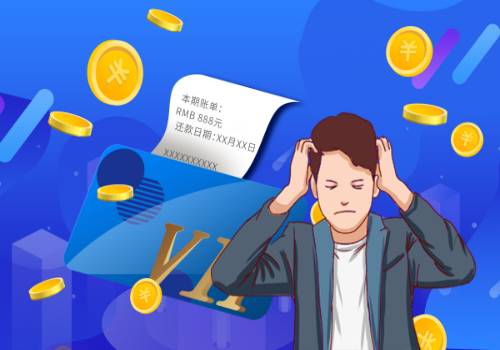Students embarked on an Integrated Science journey to discover the essence of water by conducting laboratory experiments explaining the change in states of water (from ice - water in a solid state to steam; water in a gas state or vapour state), the water cycle and the distillation process to purify salty/dirty water to pure drinkable water.
 (资料图)
(资料图)
This experimental approach challenged students to hypothesis, experiment (take action), analyse data and apply their skills through integrated science practices.
融合科学课堂学生们开始了探索综合科学之旅。通过参加实验课程来发现水的本质,解释水的状态变化(从冰、固态水到蒸汽、气态水或蒸气态水)、水循环以及将咸水/脏水净化为纯净饮用水的蒸馏过程。
这种实验方法激励学生们去假设、实验(采取行动)、分析数据以及通过综合科学实践来应用其技能。
Swipe for Mandarin1. CHANGEINSTATESOF WATERAims of the experiment:
a.To study the temperature change when ice is heated to steam;
b.To learn how to plot the data in the form of a line graph for better understanding of how the different variables influence each other and how to interpret the data. (The independent variable is the cause. Its value is independent of other variables in the study. The dependent variable is the effect. Its value depends on changes in the independent variable.)
Different states of water:
•Melting (water in a solid state, ice to water in a liquid state) - This occurs when the internal energy of the solid increases, typically by the application of heat or pressure, which increases the substance"s temperature to the melting point.;
•Boiling (water in a liquid state to steam, water in a gas/vapour state) - The action of bringing a liquid to the temperature at which it bubbles and turns to vapour or steam;
•Condensation (water in gas/vapour state to water in a liquid state) - Condensation is the process where water vapour becomes liquid;
•Freezing (water in a liquid state to ice, water in a solid state) - Freezing is a phase transition where a liquid turn into a solid when its temperature is lowered below its freezing point.
2.水的状态变化实验的目的:
a.研究冰被加热成蒸汽时的温度变化;
b.学习如何以折线图的形式绘制数据,以便更好地理解不同的变量是如何相互影响的,以及如何解释这些数据。(自变量是原因,它的值与研究中的其他变量无关;因变量是效果,它的值取决于自变量的变化)。
水的不同状态:
-熔化(固态的水,冰到液态的水)——这发生在固体的内能增加时,通常是通过施加热量或压力,使物质的温度上升到熔点。
-沸腾(液态的水变成蒸汽,气态/蒸气态的水)——使液体达到冒泡并变成蒸气或蒸汽的温度时的动作。
-凝结(气体/蒸汽状态的水变成液体状态的水)——凝结是水蒸气变成液体的过程。
-冻结(液态的水变成冰,固态的水)——冻结是一种相变,当温度降低到冰点以下时,液体变成了固体。
Swipe for Mandarin2.WATERCYCLEAim of the experiment:To simulate the forming of rainDifferent stages of the water cycle:•Evaporation (When the sun heats up water in the sea, rivers and on land, some water evaporates and becomes water vapour.Water air rises and carries the water vapour into the sky);•Condensation (As the upper part of the sky is cooler, the water vapour cools down and condenses to form small water droplets.The water droplets join together to form clouds);•Transportation (Clouds may be carried to other places by the wind);•Precipitation (Water droplets in the cloud gather and become heavier.They fall to the ground as rain, snow or hail.);•Collection (Rainwater and/or snow water are collected in rivers, lakes or the sea.)2、水循环实验的目的:
模拟雨的形成
水循环的不同阶段:
-蒸发(当太阳加热海洋、河流和陆地上的水时,一些水会蒸发,成为水蒸气。水空气上升,将水蒸气带入天空)
-凝结(由于天空的上部比较凉爽,水蒸气降温并凝结成小水滴。这些水滴结合在一起,形成了云)
-运输(云可能被风带到其他地方)
-降水(云中的水滴聚集并变得更重。它们以雨、雪或冰雹的形式落到地面上)
-收集(雨水和/或雪水被收集在河流、湖泊或海洋中)
Swipe forMandarin3. WATER PURIFICATION DISTILLATION(e.g. distillation)Aim of the experiment:
To purify salty/coloured water by distillation
What is distillation?
Distillation is the process of separating the components or substances from a liquid mixture by using selective boiling and condensation. During distillation, water is boiled and changed to steam. Impurities are left behind and the steam is free of impurities. Bioling also kills microorganisms in the water. In the condenser, the steam cools down and condenses to become water droplets. The pure water obtained is called distillate or distilled water.
3、水的净化蒸馏(如蒸馏法)实验的目的:
通过蒸馏来净化含盐/含色的水
什么是蒸馏法?
蒸馏是通过使用选择性沸腾和冷凝从液体混合物中分离成分或物质的过程。在蒸馏过程中,水被煮沸并变成蒸汽,杂质被留下,蒸汽中不含杂质。将水煮沸还可以杀死水中的微生物。在冷凝器中,蒸汽冷却并凝结成水滴,所获得的纯水被称为蒸馏水。
Swipe for Mandarin#1a5e6bEND
关键词:



















 营业执照公示信息
营业执照公示信息